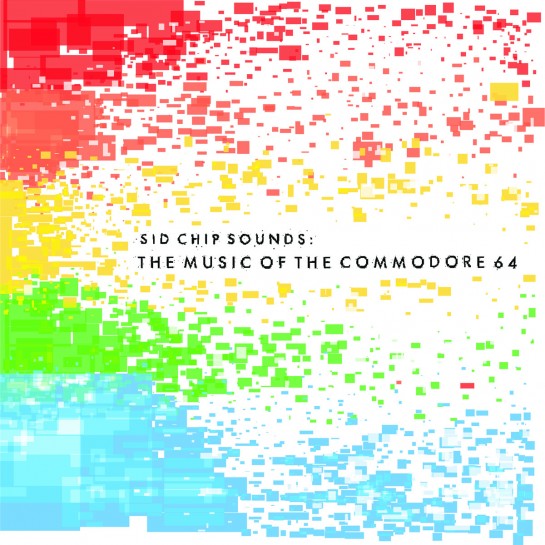SID Chip Sounds – The Music Of The Commodore 64
aaamusic | On 12, Feb 2012
When I started writing about music, I’m pretty sure I didn’t for a second think I’d be reviewing a compilation of Commodore 64 soundtracks. But it’s a funny old world, and here we are. Now, this may well make some of you think I’ve gone bananas, but in all honesty some of the stuff on here is genuinely really good. Videogame music, like film soundtracks, is a bit of a maligned niche. Yes, a fair amount of it can be lazy and the lo-fi digital sound is aural Marmite to many, but this is a “best of” style collection, and serves as a crash course and showcase in what can be done on an essentially limited medium as it tackles just about every genre you’d care to think of.
There is a whole gamut of style here, from the manic 8-bit ‘Glider Rider’ with its almost symphonic progressions embellished in a series of blips, bleeps, other sound effects, and descending note sequences, through to the slower, darker tracks by Ben Daglish which hold an echo of early heavy metal, something almost Sabbath-esque in the brooding bass structures that hold them up. ‘Last Ninja (Wastelands)’ is surprisingly atmospheric once you grow accustomed to the distinctive sound of a Commodore 64. The staccato melodies are given a surprising melodic nuance with a flavour of traditional Asian scales as well as the more Western electro/metal tones of the scaffold. (Wilderness) is a bit more… videogame, but the insane emulation of guitar in the melody is something else. Aping metal solos and bluesy string-bend sounds with a piercing insistence that is driven by a deathly serious rhythmic precision, it shows how much can be done on these machines. And the slow, brooding, atmospheric ‘Trap’ is nearly ten minutes of a musical journey that involves 80s cheesy synth, Pink Floyd, and proto-industrial sounds. The ‘Last Ninja’ theme is revisited later (‘Last Ninja 2’) with an improved diversity of synthesised sounds, and it’s interesting to hear some else’s take on the moody yet jittery sounds, retaining the metal twist to traditional Japanese melodic style and adding a skulking techno-pop sparkle to it. Tim & Geoff Follin’s ‘Gauntlet 3’ tracks too intricately blend the sounds of Western and Eastern tradition with a modern twist, emulating orchestral film scores and Eastern folk, and the second one even injects a reggae style in the depths of what tries to be a throbbing bass. It doesn’t quite hit the spot, but in terms of trying to push the sound, it’s intriguing. ‘Araknoid’ tackles the dark dance vibe with more success, a glitchy sound that holds a ghost of trance and drum & bass alongside its more ethereal moments.
Chris Hülsbeck’s ones are a lot more videogame-y, with the upbeat simplicity of ‘Giana Sisters’ and Daft Punk techno sequences of ‘Katakis’, but on the latter, there’s an eerie sound that approaches a beatbox/singing sound that shows some sonic skills and craftsmanship afoot. Martin Galway’s tracks are more challenging, deploying layer upon layer of sound, like the mindboggling ‘Parallax’, which at over eleven minutes of pulsating computerised rhythmic interplay does get a bit arduous as a pure listening experience as it lurches from pattern to evocative melody and back again.
But really, this is what gave me a real boot up the rear: ‘LED Storm (Title)’ is a mad appropriation of Deep Purple’s ‘Smoke On The Water’. That riff leads into something equal parts electro dance and Japanese woodwind sounds.
We close with the master himself, Rob Hubbard. And really, ‘Sanxion’ has more to it than a lot of pop, classical, and soundtracks that readily get called “real music” in terms of a solid rhythm, texture, dynamics and melody that’s both catchy and inventive.
I suppose that with an entire console’s repertoire of soundtrack you would be guaranteed a collection of gems. But what’s on offer here isn’t so much “videogame music is cool” because some of it is (check out Stweart Copeland’s compositions for Sptro The Dragon if you don’t believe me) but what ‘SID Chip Sounds’ is showcasing more than anything is the sheer inventiveness of musicians when faced with an unusual, even restricted medium. There are echoes of this in all kinds of electro sounds today from dance to electro rock. The diversity can fragment the album in the same way a “best of guitars” collection might experience, but as a curio and an experience, it’s in a realm of its own and there is such scope in terms of style here, although in all honesty this might prove to be a try-before-you-buy for most people not already acquainted with the sounds.
Katie H-Halinski


